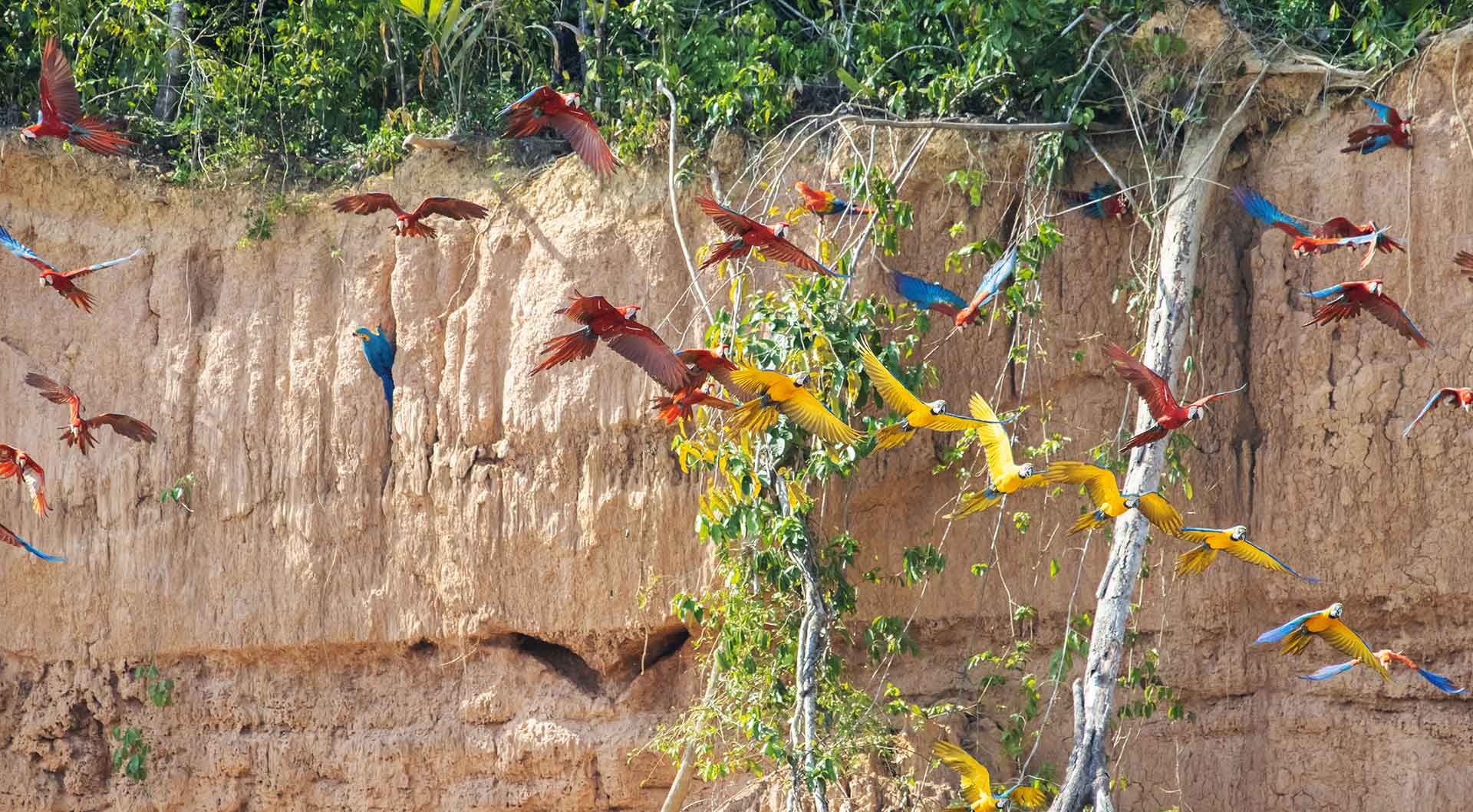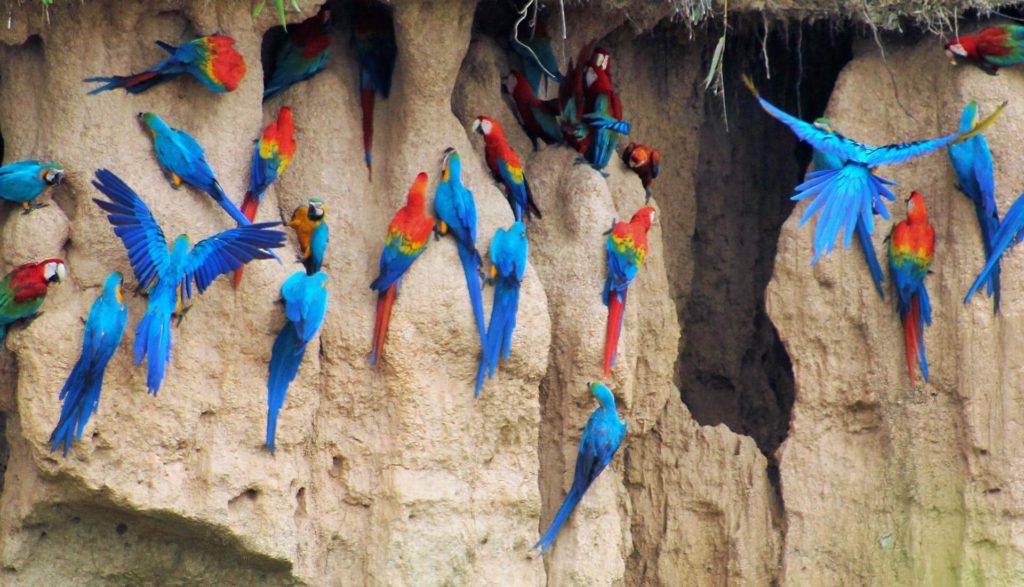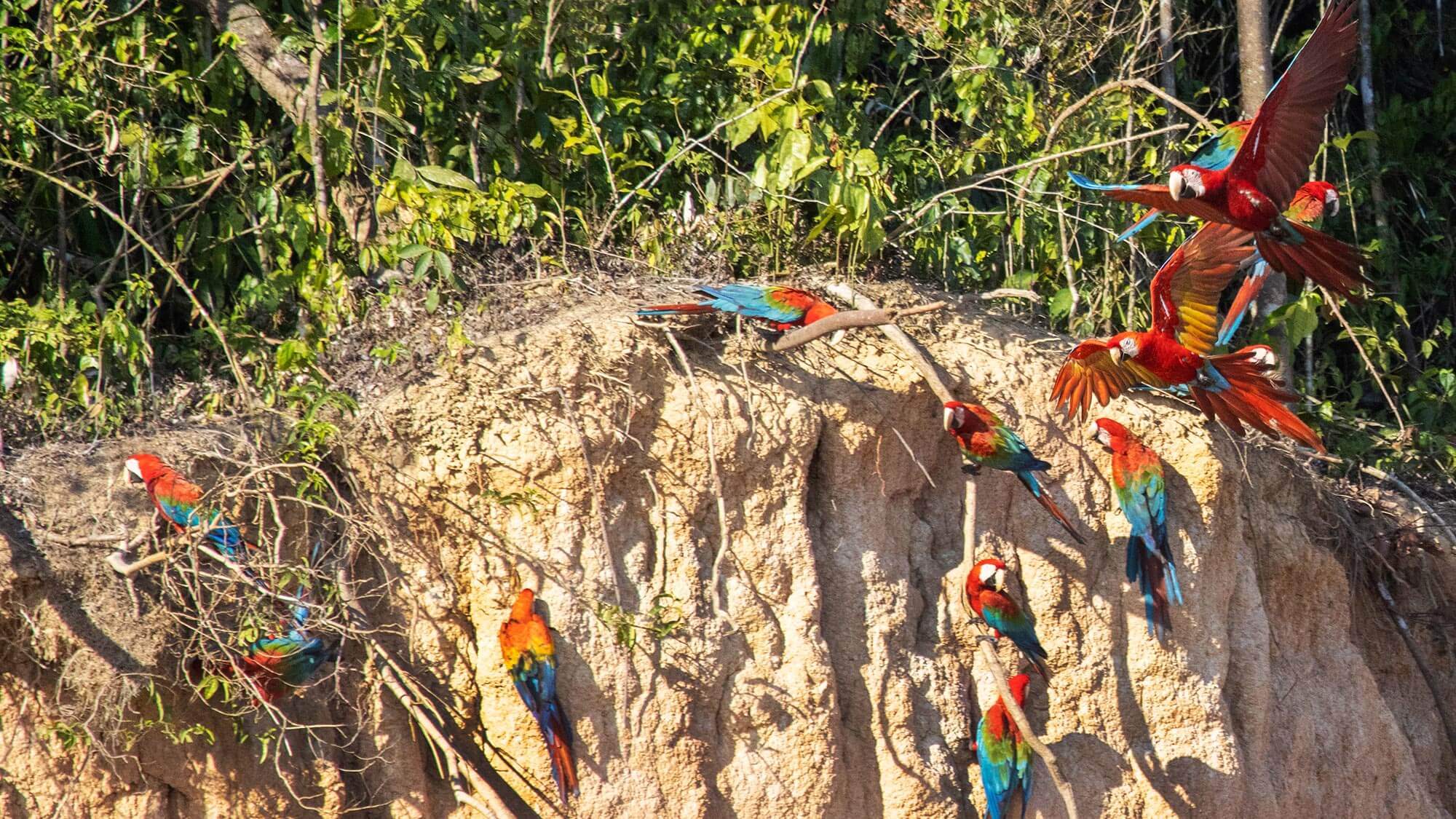
Macaw Clay Lick
There are three species of large macaws that are frequently seen in the Tambopata clay licks: the scarlet macaw (Ara macao), the blue and yellow macaw (Ara ararauna) and the red and green macaw (Ara chloropterus).
All three are majestic seed dispersers and, therefore, inhabitants of superlative importance for the health of the Amazon forests.
(Without their disciplined work as seed carriers everywhere, the forests would lose their largest trees and the collapse of these extraordinary ecosystems so vital to Gaia would be imminent).
I forgot: macaws are left-handed by nature. They all use their left paw to manipulate the seeds and fruits they feed on while deftly holding them with their right.
They are monogamous, long-lived -they can live more than fifty years-, noisy and sometimes hybridize with each other to create individuals -not species- with phosphorescent plumage.
In the Tambopata National Reserve

In the lick of the Los Amigos River or in the Purús, many times in the Tambopata, I have had to endure with stoicism the harassment of the swarms of insects in the eagerness to wait -behind a branch or an artificial hiding place- the punctual arrival of some noisy psittacine, the ornithological family that groups the parrots of the whole world.
Three hundred and thirty-two species of psittacines populate a large part of the tropical and sub-temperate zones of the planet. They come in all sizes and plumages, but only those that inhabit the territory in the shape of a thin crescent moon that extends between Madre de Dios and Ecuador gather in clay licks.


